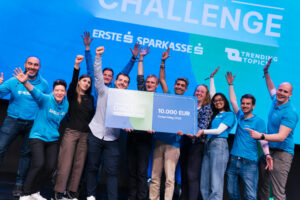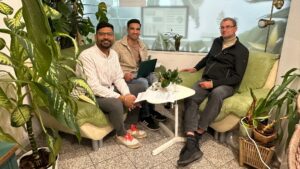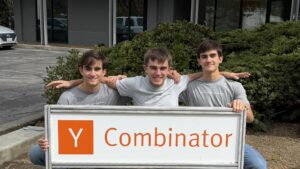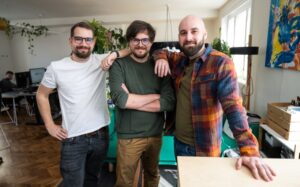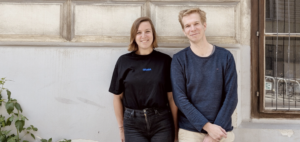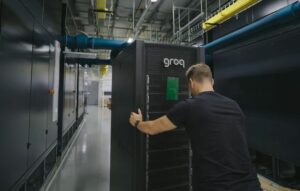Everything You Need to Know About the First City Digital Twin in Bulgaria

GATE, the Bulgarian institute for applied big data research, and Sofia Municipality just announced a cooperation agreement for a pilot of a City Digital Twin platform. Once functional, the system should help city officials make better decisions by enabling them to simulate urban processes and test different approaches before their actual implementation in the real world. The first scenarios research will focus on are related to urban planning, air quality and the analysis of the solar potential of the buildings.
“The City Digital Twin pilot project is just starting out and begins with the collection, cleaning and modeling of data. We will construct a 3D model of the city, presenting the geometry and semantics of the objects in it such as buildings, road infrastructure, green areas, relief, following an established standard – CityGML. We are also in the process of forming a multidisciplinary team of young researchers and interns,” tells Trending Topics SEE prof. Sylvia Ilieva, director of the GATE Institute.
Following this first phase, advanced analytical model and simulation algorithms will be developed to explore and forecast the future behavior of the urban environment in the city. Consequently, those should be integrated into an open platform for use by different stakeholders – the municipality, businesses, and citizens. The final aim of the project is the development of methods and tools for visualization of the 3D model. “Furthermore, the concept of real-world data and problem formulations will be applied in close collaboration with Sofia municipality to stimulate development and implementation of digitalization,” reads a description of the project by GATE.
If turned into a reality, the City Digital Twin may enable Sofia Municipality to allocate resources more efficiently, better solve various problems, and ultimately make the city a better place to live in. For the private sector, the standardized collection and provision of urban data through APIs can unlock new business models and opportunities.
“Similar initiatives have already been implemented in major cities such as Singapore, Helsinki, Amsterdam and Berlin, which provides a solid foundation of good practices to follow. Our ambition is to help position Sofia among these cities, starting with the creation of a 3D model of the Lozenets district. In the field of urban planning, for example, the 3D model will be used to study the effect of the construction of new buildings on their surroundings. In combination with computational fluid dynamics, we will be able to simulate the movement of wind and air masses, which will provide a better understanding of how air pollutants spread around the city,” stated associate professor Dr. Desislava Petrova-Antonova, leader of the scientific group in data management at GATE.
Given it’s early days of the project and public sector organizations in Bulgaria have not been exactly famous for proper implementation of innovative projects, we decided to dive deep not only in the benefits of digital twins but also into who’s currently involved in the initiative and how, what’s the technology and data stack behind, and what are the potential risks and challenges ahead.
Who’s involved
Besides collaboration on the collection of data for the 3D model of Sofia, the partnership between GATE and the municipality will involve work on new models for cooperation between the public and academic sectors, joint research projects, educational programs and the construction of a laboratory in an urban environment.
“It’s logical to have the experts at the university be our main advisor and help us in every step of the digitalization process. We rely heavily on GATE to help us execute our digital transformation strategy. It is also very important for us that this project will position Sofia as an innovative city that turns to new technologies and attracts both businesses as well as smart people who are excited about living in an innovative environment,” shared Gencho Kerezov, Deputy Mayor of Sofia for Digitalization, innovations and economic growth.
The municipal enterprise Sofiaplan has already provided the first necessary data and is currently specifying a methodology for parametric planning based on different indicators. GATE’s task will be to build the right machine learning algorithms around this methodology.
The City Digital Twin project will start with a few other key stakeholders but the idea is that in the long-term startups, research groups, and large corporations will also join to contribute with technology, expertise, or data.
“The biggest prerequisite for our success is the partnership with Chalmers University in Gothenburg. This year, a major national project was launched in Sweden for the creation of the Digital Twin Cities Centre and GATE is one of the four academic partners in the initiative. So, the development of a digital twin here in Sofia goes hand in hand with that in Gothenburg and our research teams will collaborate with each other,” explains Ilieva.
When it comes to the implementation of the pilot scenario for analysis of the solar potential of buildings, GATE will be supported by Yavor Mihailov and his team from Mixrobotics, who will provide Point Cloud data for the Lozenets Region in Sofia, the location where the City Digital Twin project will first start.
The tech and data behind a smart city
“The platform will be cloud-based and we will try to use open source technologies as much as possible. The current data from cadastral maps is transformed into CityGML, then stored in a PostGIS database, which is upgraded with 3DCity Database. In order to avoid the limitations of relational databases, and to provide ourselves with an opportunity for faster analysis, we are working on the implementation of a graph database. We have currently identified Neo4j as a technological solution, with a possible alternative in the phase of GraphDB, which is offered by our strategic partner Ontotext. In regards to the visualization of the 3D model, we step on CesiumJS – an open-source JavaScript library,” explains Ilieva.
According to the GATE team, data management and integration are at the core of the digital twin concept. Therefore, it will be important for the system to be built on standards like CityGML and semantic technologies for data interoperability and enrichment. Metadata and processes for recording are also critical given the need for trust in the quality and origin of data.
INFOBOX:
The City Geography Markup Language (CityGML) is an open information model for the representation of 3D urban objects that is quickly being adopted on an international level, with such models being produced by several major cities in Europe such as Helsinki, Berlin, Vienna and Rotterdam. It provides explicit relationships and component hierarchies between objects and thus is applicable to urban planning, environment analysis, and complex simulations.
Over time, additional data may get integrated for the exploration of other scenarios. For example, given the type of building construction and its consumption, energy efficiency may also be analyzed. Down the road, we can probably expect the development of models for heat transfer, flow of air and water, the dispersion of pollutants, sound propagation and electromagnetic fields, as well as discrete models of pedestrian and traffic flow as well as population dynamics. This should enable mathematical simulation and optimization of risk scenarios in areas such as microclimate, wind comfort, air quality, flooding, noise and electromagnetic field exposure and coverage.
For the end-users, data visualization that helps them make sense of the information is also extremely important. On this point, GATE notes: “The main challenge is to find an appropriate level of data visualization (level of detail and level of abstraction) and abstraction of representation without losing the richness of information, not at least in relation to collaborative learning potentials and targeting different stakeholder groups. As a result, the digital twin platform will provide a collaborative environment for stakeholders’ communication and citizen dialogue by adopting advanced technologies for AR and VR, addressing different senses (visual, audio, haptic).”
The digital twin platform will provide different levels of access depending on the level of sensitivity of the data. The results of the analysis and visualization will be publicly available.
The risks and challenges
The not excessively successful history of public institutions in Bulgaria when it comes to the implementation of innovation projects is one thing but there are a number of other obstacles that will need to be overcome for the City Digital Twin project to turn into something that actually brings value to society.
“The main challenge and potential risk is the interdisciplinary nature of the project. The knowledge, skills and experience required for its successful implementation include areas that are related not only to big data and artificial intelligence but also statistics, software engineering, physics, geodesy and urban planning. This makes the project extremely interesting but it also carries risks of insufficient expertise in regards to a particular problem. Undoubtedly, creating the first digital twin in the country won’t be easy. The partnerships with both the public and the private sector will be very important,” tells us Ilieva.
On a more technical level, the GATE team marks a number of open questions related to data integration: How exactly to analyze data to understand a city’s processes? How to deal with the variety and complexity of data? How to ensure that information is well documented and usable? How to establish confidence for the information so users can rely on the digital twin and the information within? How to handle safety-related information?







